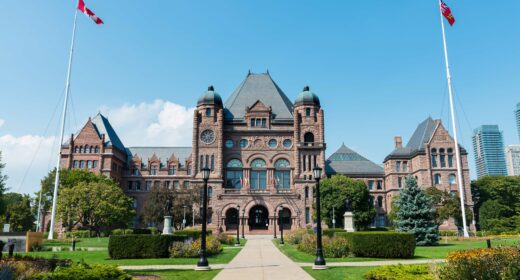Dealing with popular fashion choices has led many an employer to unilaterally impose a dress code. Jeans recently formed the subject of a dress code battle in last year’s British Columbia Labour Relations Code arbitration decision, Canadian Union of Public Employees, Local 1767 v BC Assessment Authority.
In 2014, in what can only be described as an egregious disregard for employee comfort, the British Columbia Assessment Authority (the “Authority”) tried to change the rules to prevent its employees from wearing jeans to work in one of its offices.
The collective agreement between the Authority and its employees did not contain a provision on workplace attire, but in October of 2010, the Authority adopted a Workplace Attire Policy, which applied across all of its offices. It stated:
… [I]t is our expectation that employees will come to work wearing appropriate and professional attire. Common sense, reasonableness and good judgment should prevail when selecting work attire that is appropriate for the intended activity and in accordance with WorkSafe BC and any other safety considerations.
This policy gives employees the choice of whether to wear jeans, using their own common sense and judgment on any given day.
While jeans and shorts had previously been allowed in the workplace, the expectations with respect to dress code varied significantly between the Authority’s different offices. Some offices generally allowed jeans and shorts, while others only allowed them on casual days as a part of fundraising initiatives.
At a March 2014 staff meeting, management advised employees in the Authority’s Kelowna office that there was a new dress code policy that prohibited wearing blue jeans and shorts in the office at all times, except for casual Wednesdays and during field work. The union filed a policy grievance contesting the new dress code and, in particular, the prohibition against wearing jeans and shorts.
An employer’s right to discipline employees for breaching workplace rules unilaterally imposed by management is subject to meeting the criteria originally set out in the 1965 arbitration decision of Re Lumber & Sawmill Workers’ Union, Local 2537, and KVP Co., and more recently accepted by the Supreme Court of Canada in its 2013 decision C.E.P., Local 30 v. Irving Pulp & Paper Ltd.
The policies contemplated by these decisions are reasonable, non-discriminatory rules that an employer has made without union agreement.
The criteria for a unilateral employer rule to be enforced through discipline are:
(1) The rule must be consistent with the collective agreement
(2) The rule must be reasonable
(3) The rule must be clear and unequivocal
(4) The rule must be brought to the attention of the employee affected before the employer acted on it
(5) The rule must be consistently enforced since its introduction. If the discipline for breach of the rule is discharge, then the employee must have been notified that a breach of the rule could result in discharge.
While all of these criteria are relevant to the issue of the unilaterally imposed rule, the central consideration throughout Arbitrator Dorsey’s decision was that of reasonableness.
The decision focused heavily on the nature of personal appearance and its history in the workplace. Arbitrator Dorsey, in his decision, commented:
Personal attire and grooming affect others’ perceptions of the person and the organization for which an employee speaks. Age, social norms, cultural, generational, health, lifestyle, finances and other influencing factors together with personal style contribute to a person’s choice of self appearance.
He then proceeded to review a long history of decisions concerning dress code issues, ranging from sideburns to miniskirts, tattoos to piercings. One such decision from 1972 by Arbitrator Shime (Borough of Scarborough) addressed a similar dress code dispute over the issue of sideburns. Arbitrator Shime brilliantly opened with the statement:
There is no absolute right in an employer to create an employee in his own image.
Throughout the analysis of previous decisions with respect to dress codes, it was held that objective evidence was required for the employer to prove the policy would likely do what it was intended to do, namely preserve or enhance the employer’s business interests. However, the policy must be balanced against the employee’s interests and cannot be assumed to be of greater value.
In the present case, the union argued that the blue jeans and shorts restriction was an unreasonable employer rule unsupported by objective evidence rationally linking it to a business objective.
Ultimately, Arbitrator Dorsey agreed. He held:
In imposing the change the Kelowna managers chose to limit the autonomy expressly given to the employees in the employer’s Workplace Attire Policy. … They over ruled the employees’ judgment that had been accepted throughout the preceding years by both them and their predecessors; was consistent with the policy; generated no customer complaints; and did not attract senior executive approbation.
…
I find the March 2014 permanent imposition of a restriction on wearing blue jeans and short pants to the office on non-field trip days is a rule inconsistent with the Workplace Attire Policy because it fetters employee exercise of good judgment. It substitutes manager judgment for employee judgment. There is no objective evidence wearing blue jeans or short pants to the Kelowna office "threatens or has some prejudicial effect" on the employer’s image.
Arbitrator Dorsey allowed the grievance and rescinded the permanent restriction on wearing blue jeans and shorts to the Kelowna Office on non-field trip days.
Ultimately, when dealing with unilateral rules imposed by management about employees’ personal appearance, an arbitrator is required to balance competing interests to determine whether the rule is justified. In doing this, an arbitrator must consider the nature of the potential interference with the freedom and personal rights of the affected employees.
To read more about dress code policies, see our previous article on this case.


